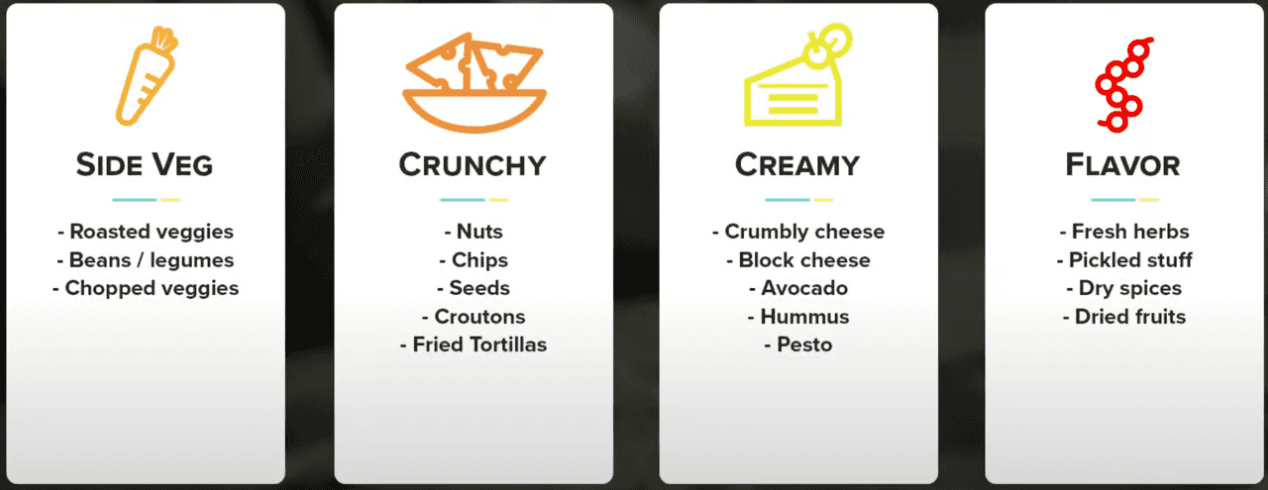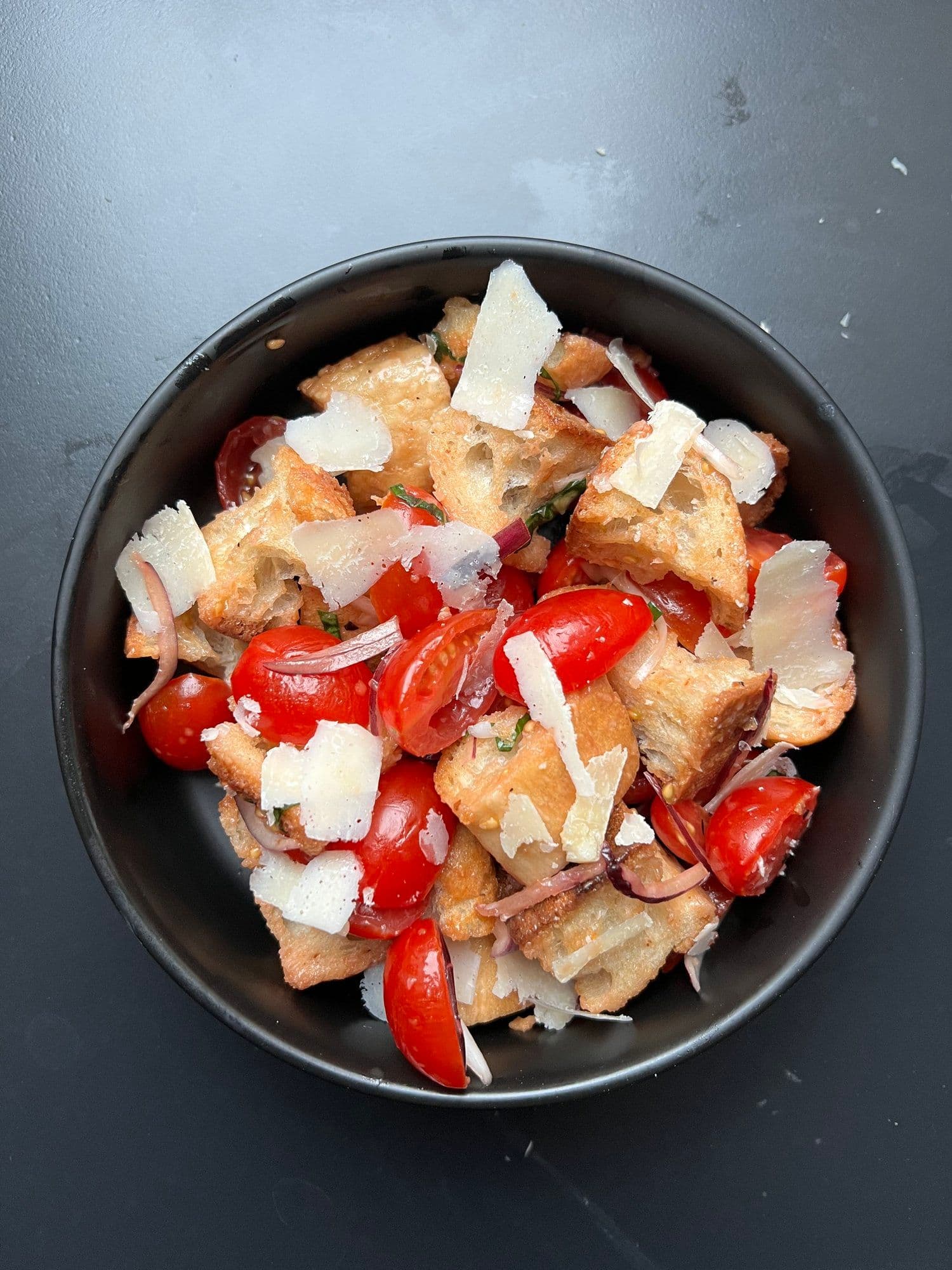Why are salads more satisfying at restaurants than at home? They include a range of ingredients that lead to a full eating experience. For a salad to feel complete, it should contain:
- Extra side vegetables or protein
- Crunchy elements
- Creamy elements
- Flavor additions
Not to mention more thoughtful dressings (see below) to bring it all together. Here’s how you should think about assembling a salad:
Step 1: Choose a base
Today’s salad blueprint isn’t just for leafy green salads. These elements are designed to dress up any salad base:
- Leafy greens
- Chopped Brussels sprouts or broccoli
- Pasta (deli-style pasta salads)
- Bread cubes (panzanella)
Step 2: Gather the additions
Then add at least one ingredient from each of these categories:

This is what will set your salad apart. The amounts of these additions are to your preferences.
Step 3: Choose a dressing
You can’t have an amazing salad with a subpar dressing from the back of your fridge. Once you realize how simple making dressing at home is, you’ll never go back.

Pair the dressings thoughtfully:
- Neutral greens like romaine fare well with a heavier, creamier dressing.
- Flavorful bases like brussels or arugula only need a light vinaigrette to shine.
Step 4: Toss it all together
Dressings contain fat and acids crucial for amplifying flavor throughout the salad. Restaurants toss and pre-dress salads thoroughly for this reason.
- Don’t skip this step: a light, even coating of dressing on your salad will be much more satisfying than a dry pile of ingredients with an uneven squiggle of dressing overtop (a classic amateur mistake).
Satisfying Salads

Blackened Chicken with Green Goddess Dressing

Southwestern Brussel Sprout Salad

Crispy Tofu Salad with Miso Ginger Mustard Dressing

Jalapeño Ranch Salad w/ Adobo Chicken

Panzanella (Italian Bread Salad)

Honey Lemon Goat Cheese Brussel Sprout Salad

Grilled Chicken Chop Salad

Caesar Salad

Chicken Salad Framework
View Entire Collection


